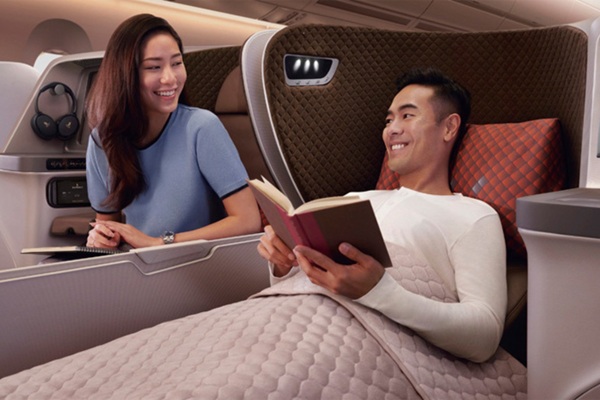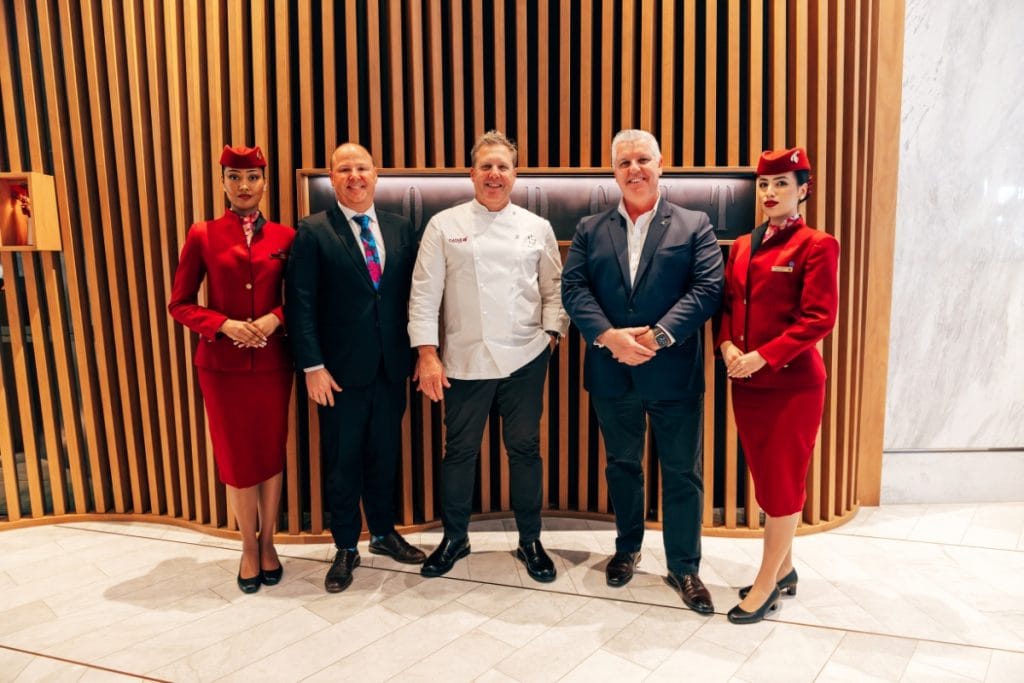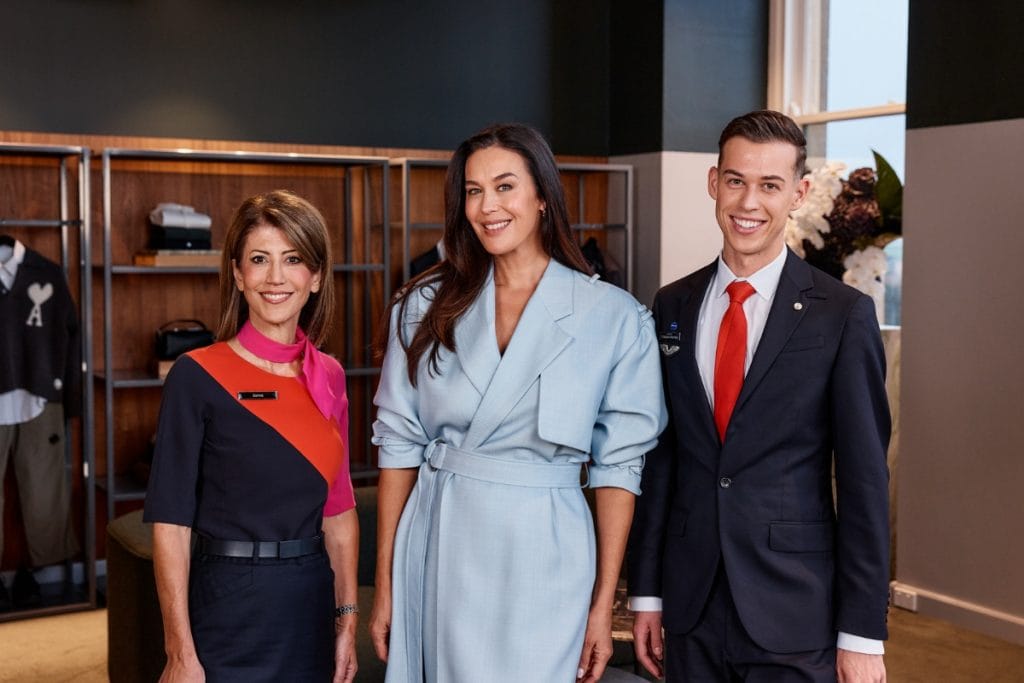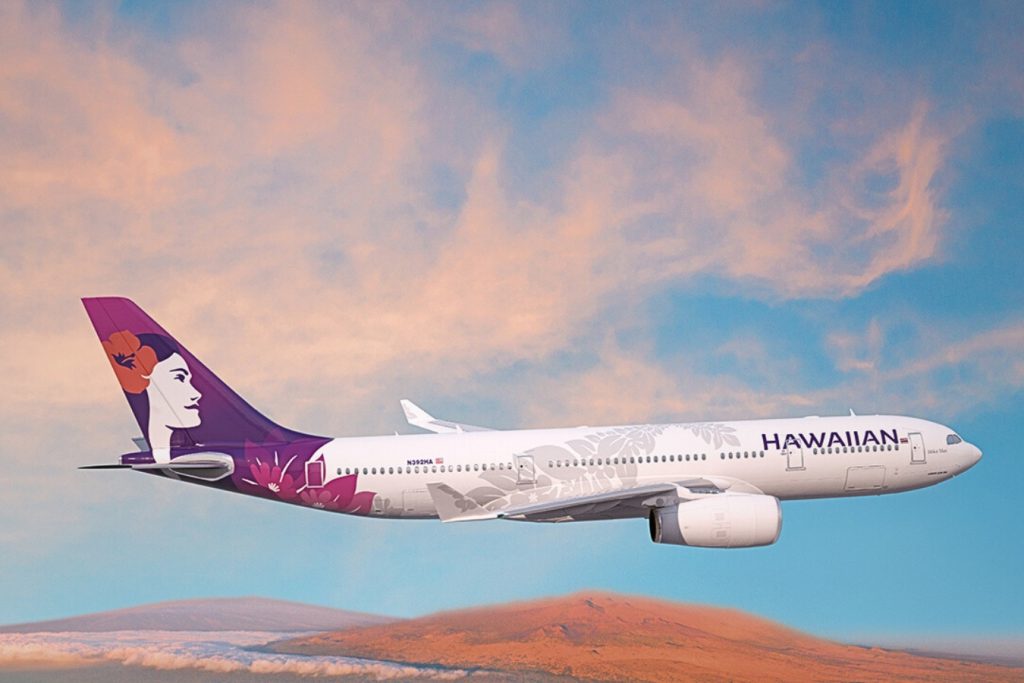The name alone demands respect. A regal resident of the skies for over 50 years, the reign of the 747 in its original capacity, a commercial airliner, is coming to an end. The COVID-19 epidemic and the resulting loss of virtually all passenger revenue is forcing countless operators to expedite the removal of the 747 from their fleets.
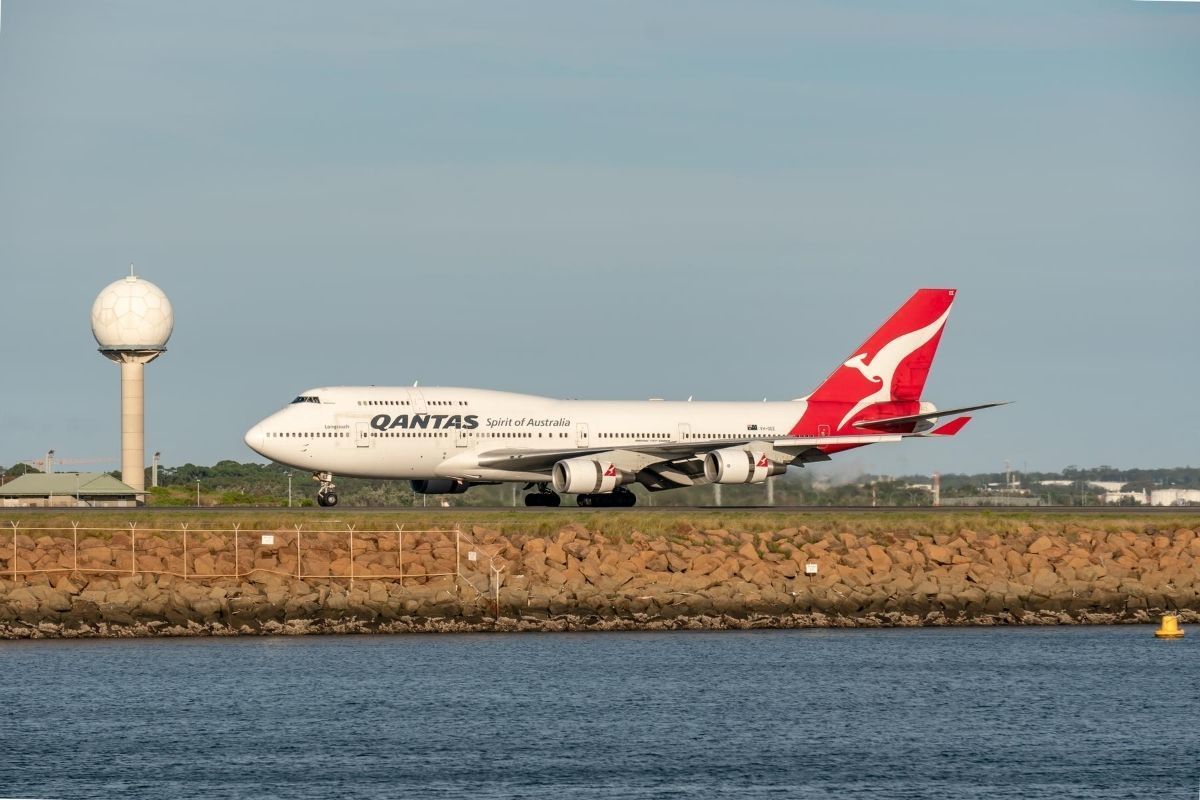
The ultimate reason? The safety those four engines added to long-haul routes over vast bodies of water (read: no airports available for diversion) came at the cost of low fuel efficiency and high maintenance, and thus has necessitated the industry shift to more economical twin-jets whose modern technology offer significantly lower fuel costs with equally safe operation.
So, where the skies of the 1970s and 1980s may have been dominated by the Queen, gallivanting from continent to continent, the 90s, 2000s, and more recent years have seen the rise of the 777, 787, and most recently, the A350 where routes don’t demand high capacity and instead favour smaller, more tactical airframes.
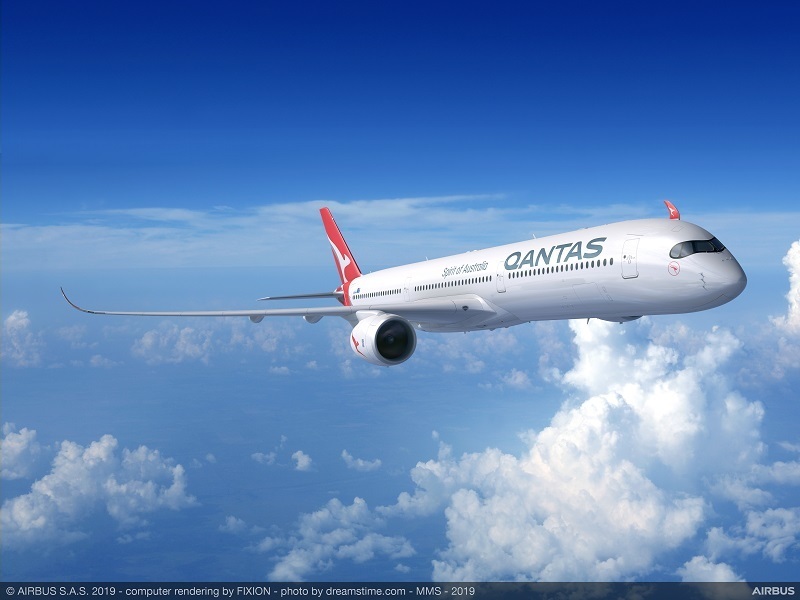
For many aviation geeks, a niche dominated with polarising views whose Boeing vs. Airbus conversations often bring more passion and controversy than a US Presidential debate, the 747 is an exception and typically gleans respect from even the staunchest side-stick aficionado.
And it’s not because of its iconic hump, aggressive head-on looks or swept-back wings, it’s because this single aircraft made long-distance, high-volume travel economical and safe for operators, and thus accessible to a much greater portion of the world population than ever before.
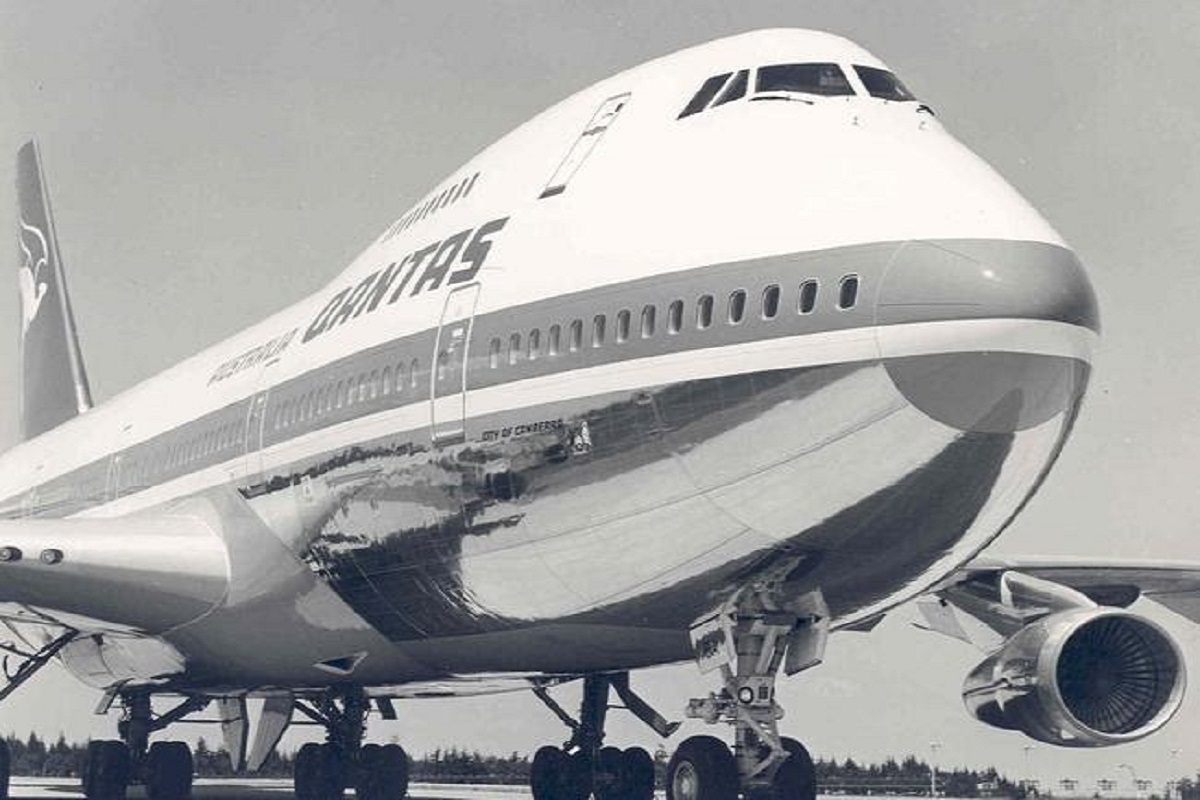
Introduced in 1969, the same year that astronauts landed on the moon and only 66 years after the Wright brothers flew their fabric-covered Wright Flyer on a few-second long journey across the North Carolina sand, the 747’s first iteration, the 747-100, quickly became the workhorse of those airlines with high-volume international traffic.
At the time, flying was still a luxury reserved for those in the upper echelons of society as it was expensive and required significant time investment, especially when arriving from or departing to Australia.
Route maps varied by day of the week, but when travelling on the relatively small 707 or V-Jet, you might find yourself stopping in Singapore, Kuala Lumpur, Colombo, Bombay, Teheran, Istanbul, and finally Athens en route to London in the mid-60s. You would pay a hefty sum to enjoy the privilege, too.

So, in order to make flying more affordable and thus accessible to the masses, something had to change. In the mid-1960s, Pan-Am asked Boeing to investigate a much larger aircraft than the 707 without having to sacrifice any range or performance characteristics.
Enter Joe Sutton at Boeing, the man who had already created the only just recently toppled king of single-aisle jets, the 737. Sutton then, along with thousands of colleagues nicknamed the “Incredibles,” spent 16 months designing and building the plane that would change aviation forever. Notably, it was built so quickly that the factory didn’t even have a roof as the first airframes rolled off the production line.
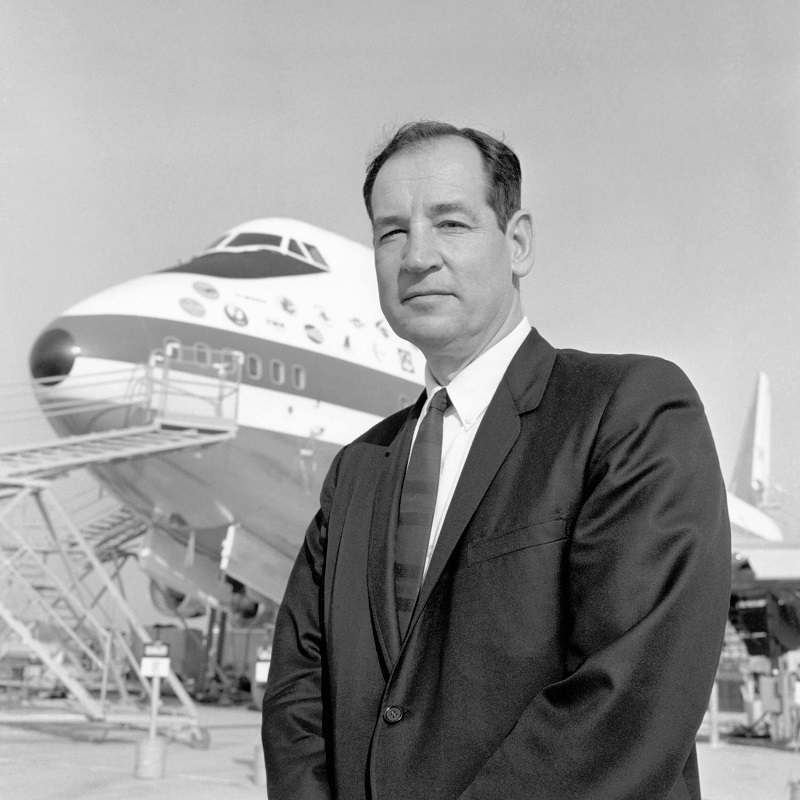
The 747 wasn’t just another plane, especially to Qantas. As Qantas’ CEO Alan Joyce said on Wednesday, it contributed to the “overturning of Australia’s much-lamented tyranny of distance.” The $123 million dollar investment (over $1 billion in today’s dollars) in four aircraft, remains the largest investment Qantas has made, and it was in the midst of the introduction of the supersonic Concorde, which was expected to be the way forward in commercial passenger travel. But the mid-range Concorde wasn’t the right fit for the long to ultra-long-haul routes to North American and Europe that the Red Roo had in mind, thus beginning the age of the Jumbo.
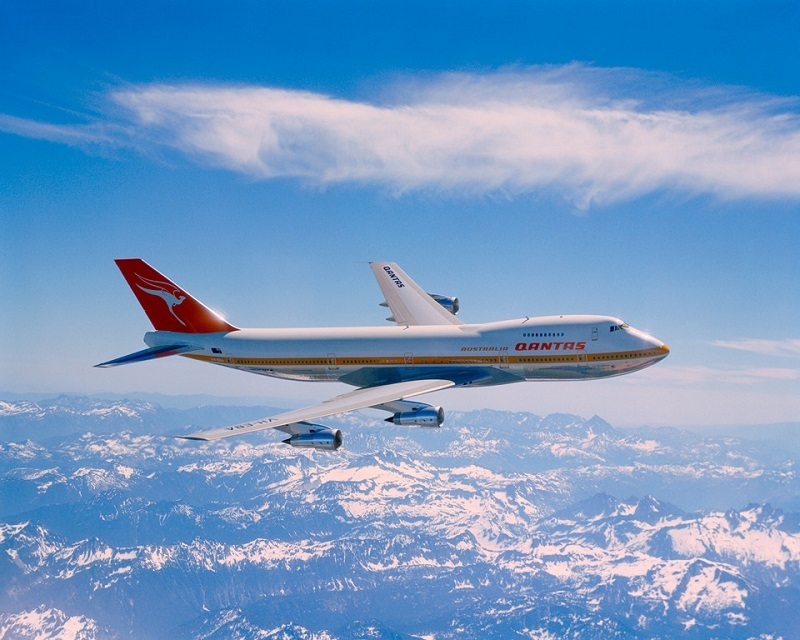
The first deliveries to Qantas in November of 1971, the 747-238Bs (VH-EBA), radically changed both the North American and European route network by removing the need for many of the previously required stops. Europe was suddenly accessible via a quick turn in Singapore, the United States via Honolulu. And it wasn’t just the reduction in time and cost that made this plane a joy to fly.
Qantas, over the years, also pioneered many of the “table stakes” in travel that we take for granted these days. Examples include the invention of portable galley carts to make catering a pit-stop-like activity, and the introduction of standalone Business Class as we know it today in 1979.
The improvements to the range didn’t stop with the first variant, either. Qantas took delivery of the oddly shaped 747SP in 1975 which introduced non-stop travel to the United States; this being made the default when the long-range and even-larger 747-400 arrived in 1988.
The accolades and triumphs don’t end there. Qantas states that it has operated nearly every variant of the frame including the 747-200, 747-300, 747SP, 747-400, 747-400ER. These crafts have carried over 250 million passengers 3.6 billion kilometres, the equivalent of 4,700 round trips to the moon, or 90,000 times around the world. From the Pope to the Queen, various other VIPs, and per Joyce, “hundreds of Olympics medals” they have served their purpose well.
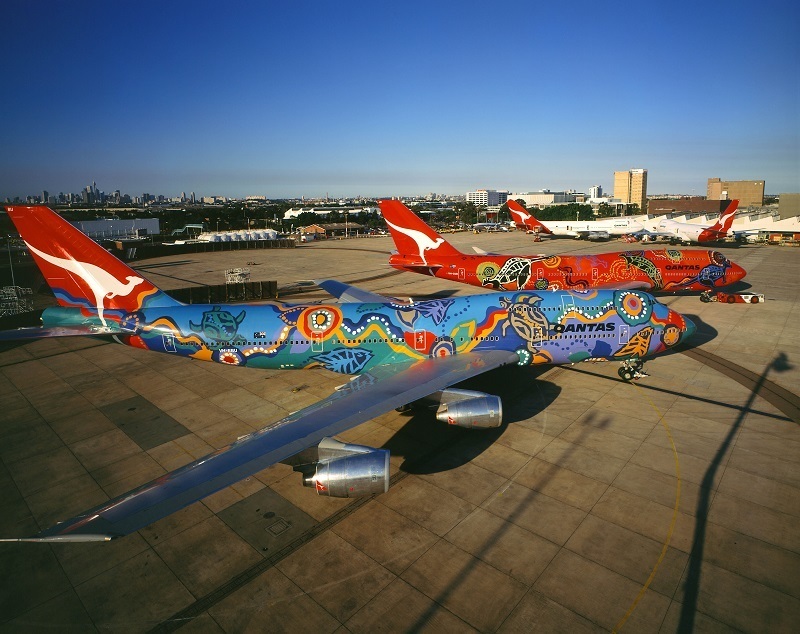
And their contributions don’t end with commercial movements, they have also served humanity by evacuating cyclone survivors out of Darwin after cyclone Tracey in 1974 (setting a record for carrying 674 passengers, which was surpassed only in 1991), Australians out of Cairo in 2011, and by flying medical supplies to and tourists back from the Maldives and Sri Lanka following the Boxing Day Tsunami in December 2004. Again, an emotional Joyce said he will never forget the family leaving Egypt after two weeks of being stranded in the midst of the Arab Spring uprising saying that when they approached the airport and saw that big red tail at the gate, “they knew they were safe.”
Finally, I would be remiss if I didn’t mention both VH-OEJ and OJB, who carried the beautiful Wunala and Nalaji Dreaming liveries, respectively. These stunning, indigenous-designed paint-jobs introduced many around the world to the First People of Australia and proudly represented the Aboriginal culture for many years.
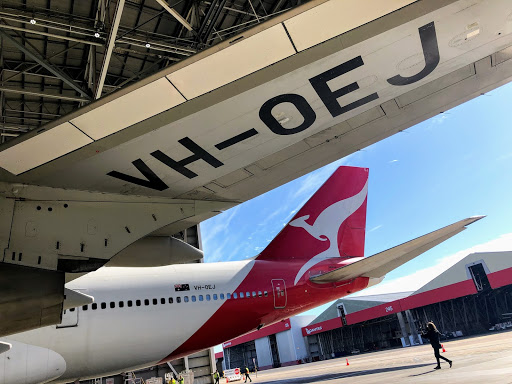
On Wednesday the 22nd of July, Qantas said goodbye to its last 747 airframe, VH-OEJ, after nearly 17 years of faithful service. What was supposed to be a drawn-out, six-month ordeal consisting of points-planes (flights only available for those with Qantas points), media junkets, and other ceremonies around the country was cut short since the now hyper-conservative airline couldn’t justify holding onto the remaining fleet any longer. The result was just three short joyrides departing from Sydney, Brisbane and Canberra, and the final farewell that I attended this week.
The official ceremony took place in Qantas Hangar 96 on the grounds of Sydney International Airport, and it was as respectful as one would expect. It started with a traditional Aboriginal ceremony to give thanks to the plane for its service to the country, and for sharing indigenous culture far and wide.
After that, Alan Joyce (CEO of Qantas) paid tribute to the 747, VH-OEJ, as well as its crews and support personnel. He called out one Captain who had clocked up over 23,000 hours (that’s 2.6 years) and mentioned how OEJ has served many unique roles, including the humanitarian efforts highlighted above. He also introduced the Captain of the flight to LAX, who was the first female Captain for the 747 at Qantas. At this point, the President of Boeing Australia spoke and gave thanks to the airframe and to Qantas for their long relationship that continues with the Dreamliner.
Continuing, 747 pilot Geoff Cowell read a poem he wrote about his time on the Queen. It reads:
Benediction For a Queen
Aircraft are just metal constructs,
Assembled on a factory floor
But to the lucky few who fly you,
You are always so much more
When you joined us newly gleaming,
Latest in a noble line
Your majesty and graces impressed us,
Now had come your turn to shine
Quickly logging mileage,
Countless wishes granted on the way
Thrilling everyone who flew you,
Hoping you would always stay
Icecaps, oceans, deserts, and forests,
You have overflown them all
Born your subjects safely onwards,
Your reputation standing tall
There were times some pilots cursed you,
Hurts to say it but it’s true
If you humbled them the reason,
It’s because they disrespected you
You have met our every challenge,
Explorer of the highest skies
Surpassing all who came before you,
Unrivalled in your pilot’s eyes
Now, your engines falling silent,
Heralds in your time to rest.
Know that, even as we leave you,
You have simply been the best.
Finally, the crew proceeded up the steps, the door was shut for the final time on Australian ground, and the plane that connected us to the world left us for the last time.
A lot of foreigners (me included) don’t understand why this plane was different for Qantas, and for Australia for that matter. Mainly that’s because, to the traditional avgeek like me, we see it as a stunning engineering marvel and an embodiment of all that is amazing about aviation and travel.
However, to Australia, this plane, and intrinsically the airline that operated it represented the country’s ability to play on the first world stage, and overcome the tyranny of distance that continues to plague us. It connected families, businesses, and friends in a democratised way and made air travel what we know it to be today. And for that, we say thank you.
Fun Facts about the 747
- The First Lady of the United States christened one of Pan Am’s first 747s, which was named the Clipper Young America.
- Qantas operated four 747-400s with attachments for a fifth engine. This was used to ferry a spare to a remote station instead of chartering a cargo transport.
- Built in a time when some thought supersonic travel would be the norm for passengers, the 747 was designed to be an effective cargo hauler – hence the upper deck and its iconic “hump.”
- In addition to moving cargo and passengers, the 747 has also served as a transport for the US Space Shuttle, acted as a flying telescope, hosted Antarctic tour groups, been converted to VIP transport for heads of state and private individuals, helped put out forest fires, and even refueled the Mach 3+ SR-71 reconnaissance aircraft.
- Qantas continues to work with Atlas Air for freight services on the 747-8F. Other commercial operators of the -8 passenger variant include Lufthansa, Korean Air, and Air China.
While you’re here: Subscribe to our newsletter for the latest tips, deals and news. It only takes a few seconds and we respect your privacy:

